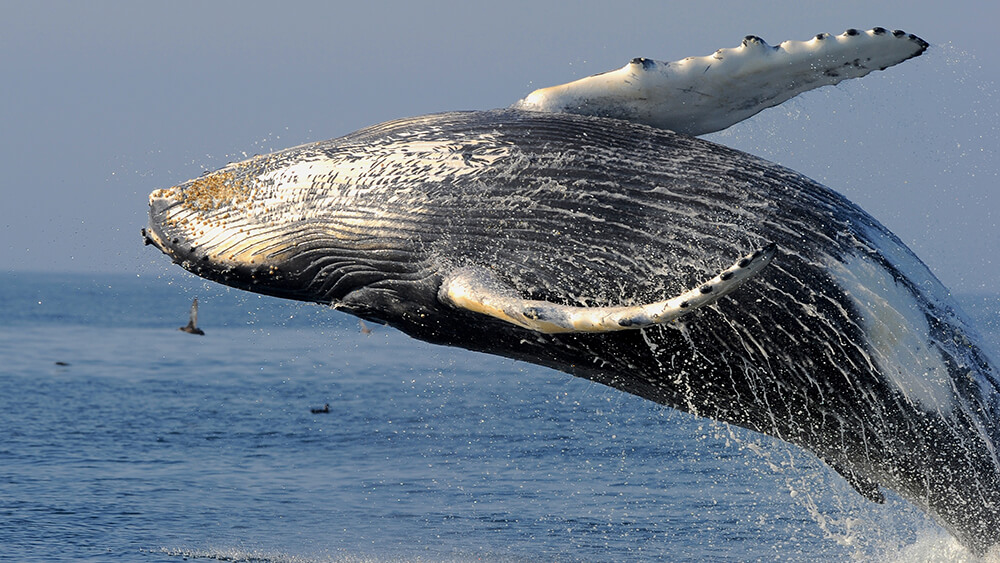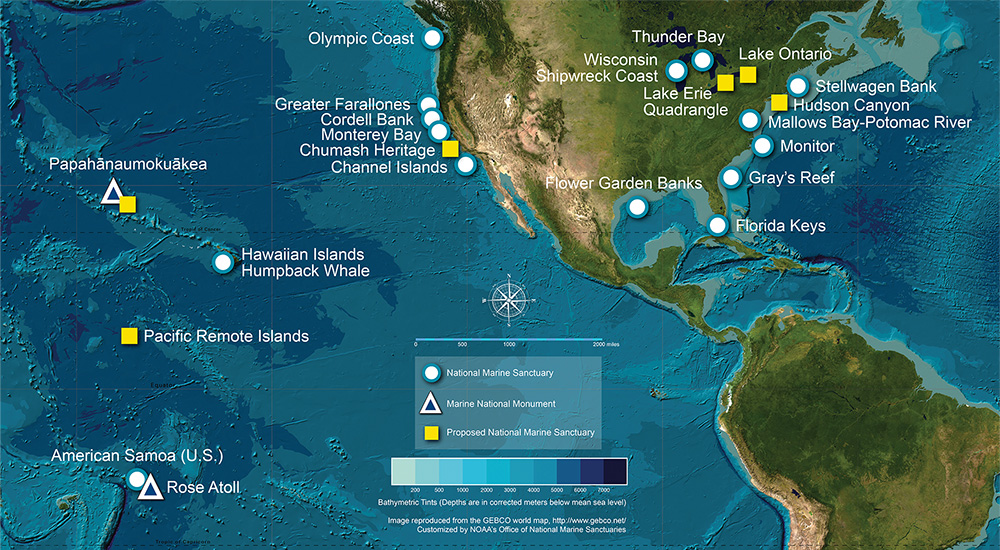
Stellwagen Bank National Marine Sanctuary, a wild ocean place near an urban world, sits east of Boston, Massachusetts between Cape Ann and Cape Cod. Historically important as a fishing ground, New England's only national marine sanctuary now reigns as a premier whale watching destination and continues to support commercial and recreational fishing. Its shipwrecks serve as time capsules of our nation's maritime history.
In April 2024, Stellwagen Bank National Marine Sanctuary staff and volunteers participated in Whales In Motion through Sound Explorations, a special interactive exhibit celebrating Massachusetts Right Whale Day at Boston’s Museum of Science. Blind and visually-impaired students and adults experienced the locomotion and foraging behavior of humpback and North Atlantic right whales through 3D sculpture models with musicians performing live. As participants ran their hands across these sculpture models, musicians performed action-specific melodies that matched the same contour and shape of the model.
Stellwagen Bank National Marine Sanctuary and the Bureau of Ocean Energy Management partnered for groundbreaking research to understand the ecological and commercial value of sand habitat. Video Credit: BOEM/NOAA SBNMS
Sign up here to receive bulletins about sanctuary news and upcoming events.

Thinking of going on a whale watch? Visit our whale watching pages to prepare for your trip. Check WHALESENSE to find environmentally responsible companies. Learn about local whale research.

The sanctuary supports sustainable recreational fishing. Check regulations before heading out. Learn about local species, and find out about funding opportunities for education, outreach, and research projects that promote sustainable, ethical recreational fishing.
Immerse yourself in the ocean and your national marine sanctuaries without getting wet!

Safeguarding America's Premier Marine Places
From Washington state to the Gulf of America and from the Great Lakes to the Pacific Islands, the National Marine Sanctuary System protects 18 underwater parks spanning over 629,000 square miles of ocean and Great Lakes waters. By investing in innovative solutions, we strengthen these iconic places to address 21st-century challenges while supporting America's commerce and tourism. These unique locations inspire people to visit, value, and steward our nation's iconic ocean and Great Lakes waters.